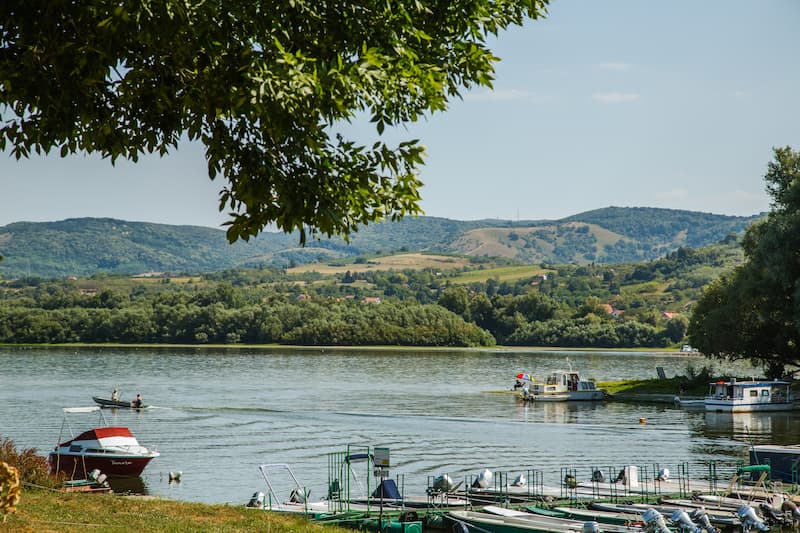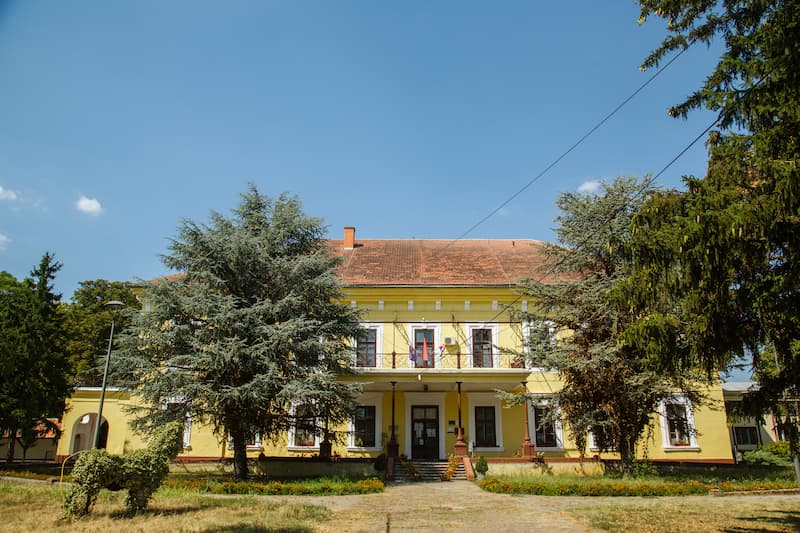The suburban settlement along the Danube, close to Novi Sad, is often associated with one of the most visited events – Kupusijada Festival. However, few people know that this settlement can boast of a rich history, the fact that at one time it was the most important trading centre in Europe, and that it is one of the oldest settlements in this area. Almost Older than Novi Sad Itself
Futog is located on the left bank of the Danube, 11 km west of Novi Sad, with more than 18 thousand inhabitants. It used to be a busy seaport, trading centre and fairground. The importance of Futog throughout history is seen by the fact that Petrovaradin Šanac or Novi Sad was once referred to as a settlement located near Futog, and not the other way around. The name of the place itself came from the name Futtak (Vutok), from which Futog is derived, which means a settlement between two streams, an inlet. The first name of the place was Futak in 1250, then Futagh in 1303, Futagah-opp in 1456, Uj-Futak, Neu-Futak, Alt-Futak.

Items 3 Millennia Old
Prehistoric sites were found on the territory of Futog: Sesije, Gornje Šume, Vodice, Bokternica and Pašnjak. The largest bronze hoard of Vojvodina, over three millennia old, was found here. The storage has over 400 different items or 16 kg of tools, dishes, jewellery, etc. These items are now kept in the Museum of Vojvodina in Novi Sad.
Futog: Settlement and European Trade Centr
The swampy area and the lack of roads influenced the creation of an important busy seaport, trading centre and fairground on this part of the Danube flow. In addition to Čerević and Banoštor, Futog received the right to maintain the ferry crossing. The first written mention of Futog dates back to the beginning of the 13th century, at the time of the Tatar invasion and testifies to the existence of a large harbour port. Prince István granted Futog the right to organize a ship towing service in 1270. Due to its economic and strategic importance, and the development of agriculture and trade, on the other hand, Futog gets the status of a settlement. The Hungarian Parliament sat here several times, and the state assembly of the nobles in the war with the Turks was also held here. Until the arrival of the Turks, Futog was governed by feudal lords Futaki, Gorjanski, Ivan Korvin and Emerik Terek.

During the 13th, 14th and 15th century, Futog was one of the largest trading centres in this part of Europe. Grain, wine, southern fruit, dill, leather, textile leather and cattle were traded in particular. The treasurer of the Hungarian king Vladislav in Futog, in 1494, bought 300 kg of figs for the king for 20 forints, and four days later his student Petar bought saffron at the Futog fair. Merchants from Asia Minor and the Black Sea came along the Danube route. Here, Turks, Aromanians, Armenians, Persians, Russians and merchants from European countries met. The most visited was the Mitrovdan fair, which lasted six weeks. The Futog fair, which was held until the end of the 18th century, was one of the largest in Europe. At that time, Futog was a sort of crossroads of the world. In the 18th century, there was the development of brewing, the production of hemp, tobacco, grain and vegetable plants, especially cabbage.
‘Wonderful settlement’
During the Turkish rule (1528-1687), Futog was a gathering centre for the army, ships, food, and a ‘wonderful settlement’, as described by the travel writer Evliya Çelebi. When the Turks were definitively expelled from these areas, the Futog seigniory was rented to noble families, such as: General Baron Joseph Nehem, Count Butler, Count Cernhaus, Joseph Odwyer, Count Friedrich Lorenz Kavrijan, Mihajlo Čarnojević, Count Marshal Andrija Hadik, the Count Chotek family.
Hadik, who added ‘von Futaki’ to his name, hired the designer Francisco de Paolo Manet in 1777 to build a castle. This castle is a monumental baroque building, worthy of Hadik’s military glory, the title of president of the court’s War Council and deputy of Erdelj. Today, it houses the Agricultural High School, with a student dormitory.

The last owners, until the First World War, were Maria and Rudolf Chotek, who built a Roman Catholic church of cathedral proportions, the Sacred Heart of Jesus (1907/8), to which a spacious underground tunnel once led from the castle, under the main road

In the basement of the castle, the remains of a prison were found, in which Field Marshal August von Mackensen was once imprisoned. The Choteks also built two endowments – the Rudolfinum Orphanage and the Marianum Hospital. In addition to this, the church houses the third largest organ in the former SFRY, the work of Budapest master Otto Rieger.
The Choteks donated a monetary contribution of as much as 3,000 krone for the restoration of the Serbian Orthodox Church of the Holy Healers, which was more than the contribution of any Serb, which did not exceed 550 krone.
The Serbian people built the Church of the Holy Healers Cosmas and Damian (1776) and the Church of the Annunciation (1781) with voluntary contributions. In the Orthodox Church of the Holy Healers, the relics of Saint Prince Lazar were hidden and kept, on two occasions in 1716 and 1848. The iconostasis of this church was painted by Arsenije Teodorović, the Last Supper is painted on the altar, the representation of the Last Judgment on the west wall, and compositions with the Virgin Mary on the vault of the church

Coat of Arms of Futog
Considering the rich historical tradition, it is not surprising that Futog had six municipal and five lordly coats of arms. The most interesting, but rare in Serbian heraldry, is the coat of arms found on a seal from 1739. In the right part there are three beehives, and in the left part there is an upright plowshare. These symbols depicted the wealth and economic power of Futog, and indicated what the population of the time did.
Settlement of Futog
After violent wars, this part of the Vojvodina lowland, formerly Hungary, was demographically destroyed. The Great Migration of Serbs, which took place in 1690, strengthened the Serbian ethnos in these areas. Serbian Patriarch Arsenije Čarnojević himself stayed in Futog on several occasions. But the Habsburg rulers actively participated in the settlement of the new Catholic population. From 1771 to 1774, German colonization in Futog lasted. The Germans formed the settlement Novi Futog, while Serbs lived in Stari Futog. The Germans had their school in the settlement of Novi Futog, while the Serbs had a school in Stari Futog. The first official school in Futog started operating in 1707, within the monastery, and the first teacher was Janko the priest. After the Second World War, the German population was expelled from Futog, and the Serbian population was colonized from the war-ravaged areas of Bosnia and Herzegovina, Kordun, Banija and Lika.
A Rich Historical and Tourist Offer
Futog is a settlement that can boast of a very significant history and an increasingly rich tourist offer. One of the most famous, and certainly unique events, is Kupusijada Festival. It is held every year in autumn. Cabbage from Futog is an autochthonous product and a type of cabbage that has been produced here for more than two centuries.
At the place where the pier used to connect Bačka and the Srem coast, between Futog and Čerević, today there is a weekend settlement Čerevićka skela. The Dunavac raft-csárda, which departed from Vukovar in 1997, is located here. Csárda offers excellent fish specials, indispensable tambouritza musicians and a view of the Danube willows.

The residents of Futog most often visit the wild Vok beach on the Danube. The beach is not arranged, but very pleasant, without crowds and noise. There are trees along the beach, which create natural shade. Adults usually sit there, while children enjoy the shallows or make their art in the sand. Riza, the confectioner, often passes by here with his ice cream van. When the Danube recedes in summer, large banks appear, as well as river islands, which the locals like to visit.

Author: Author: Ljiljana Dragosavljević Savin, MA Historian
Photo: Marko Pudić







